The approach of the 76th anniversary of the Allied invasion of Normandy, that epic gamble of lives and weaponry, the turning point of World War II in Europe, recently has stirred Eliot Kamenitz’s thinking about the American flag. In particular, he ponders finding an appropriate replacement for the beautiful flag provided to Kamenitz’s family through official channels after the December 1994 death of his father, a veteran of D-Day.
Joining a groundswell of patriotic displays after the terrorist attacks of September 11, 2001, Kamenitz, a career newspaper photographer, had hung the honorary flag outside his home in the Mid-City neighborhood of New Orleans—and someone promptly stole it. He thinks of his father, and the flag’s potent symbolism, around the time of each D-Day commemoration.
“I wish I had my father’s flag so I could fly it,” he says. “D-Day is special to me because it was always special to him.”
Actually, D-Day at Normandy wasn’t just a special moment in time for Brooklyn, New York native Milton Kamenitz. It was the defining episode of his life, a point made clear to his son, in matter-of-fact style, as Eliot grew up. Everything else, from economic hardships during the Depression era to selling real estate in Florida late in life, was “before” or “after.” He would say:
“I survived D-Day. Since then I feel like I’ve been on borrowed time.”
Milton Kamenitz
Milton Kamenitz, the son of a taxi driver, as a young man was eager to work hard and see new places; before America was plunged into war, he signed on with the Civilian Conservation Corps to help build parks. Always attracted to the performing arts—he was handsome, a talented dancer and singer, good with comedy—he once flirted with the idea of moving to California to pursue movie-extra roles in Hollywood. (When questioned late in life about his selection of a burial site in Hollywood, Florida, a considerable drive from his home, he quipped, “When I die, I can say I finally made it to Hollywood.”) As war developments commanded world attention in mid-1941, several months before the Japanese attack on Pearl Harbor, an unmarried Kamenitz joined the Army and served in a chemical warfare unit.
Bored with that assignment, he jumped at the chance to become a glider pilot as the US Army geared up, after Pearl Harbor, for use of an innovative surprise tactic. Typically towed by bulky C-47 planes and set loose near drop zones, the engineless gliders—carrying troops, equipment, or supplies—were designed to land behind enemy lines with minimal noise.
But the stealthy aircraft were notoriously dangerous, often dubbed “flying coffins.” Made mostly from light wood and canvas, the gliders and their occupants were essentially defenseless against anti-aircraft flak. As they executed controlled crash landings, the gliders faced additional perils in the form of tree limbs, stone walls, or other ground hazards.
Milton Kamenitz, eager for action, was pleased that he could earn his glider wings in a mere six months after training in multiple states. He was immensely proud that, as a young aviator-officer who never finished high school, he would be handed a critical invasion role and that nearly a dozen troops at a time would trust him with their lives. He also relished the feel of descending toward earth in a glider. “He said flying a glider was total freedom,” his son remembers. “Flying through the air was like a hot knife slicing through butter.”
Milton Kamenitz, a newly minted glider officer, earned his wings after six months of training and prepared to participate in one of the most important military actions in world history. Photo from Kamenitz family collection.
Early on D-Day, after a lofty tow from England, Kamenitz co-piloted a glider through the Normandy darkness, part of the 437th Troop Carrier Group’s “Mission Detroit.” The plane was peppered with anti-aircraft fire but landed without serious mishap near the village of Sainte-Mère-Église, delivering a jeep and 82nd Airborne Division soldiers. They in turn sought out other airborne units to help secure a strategic crossroads.
An after-action report sent to Eliot Kamenitz by the Silent Wings Museum in Lubbock, Texas offers a terse account of his father’s D-Day flight. Based on an interview with Milton Kamenitz and fellow pilot George Christenson, it says in part: “We landed at 0405 … in a short, but level field with no obstacles. We missed a herd of cattle … We were fired upon while on tow all the way across and received some holes in the glider. We bent the gear in landing.”
Milton Kamenitz poses in front of a plane with a fellow service member. Photo from Kamenitz family.
Other details from D-Day were passed on informally by Milton Kamenitz to his son. The two glider pilots, under orders to return quickly to the invasion beaches, faced harrowing episodes. Running behind the other pilot as they sought a hole for protection in during enemy shelling, Kamenitz was launched into the air by an explosion, and he wound up on the ground underneath Christenson. During their journey to the coast they also found a crashed American glider with an unconscious pilot, his face smashed and covered in blood. They carried the badly injured pilot to an aid station, where a medic, after a glance at the pilot’s dog tag, announced, “I need blood type H!” Kamenitz, a Jew, recognized the “H” as code for Hebrew—a wartime innovation to prevent identification of Jewish service members if they became prisoners—examined the dog tag, and corrected the medic, “You idiot, his blood type is O!”
In addition to the Normandy invasion, Kamenitz flew gliders during later invasions in Southern France and Holland. He faced blistering criticism from his passenger troops in Holland when the landing plane dug into a muddy bed of tulips and flipped. But he considered it a major achievement that there were no serious injuries during his three flight missions.
After the war, Milton Kamenitz married, held a series of jobs in New York and Florida, raised and encouraged his son, performed in synagogue plays when he had the chance—living out his version of the American dream. He occasionally spoke of WWII experiences, proud but never boasting. In 1979, Milton and his wife Rhoda traveled to the Dallas area for a convention of WWII glider pilots and Eliot, at the time a Dallas Morning News photographer, spent time with them at a glider museum (an earlier version of the museum now in Lubbock), gleaning a better understanding of his father’s service.
Newspaper photographer Eliot Kamenitz joins his parents, Milton and Rhoda Kamenitz, in a 1979 visit to a WWII glider pilot museum near Dallas. Photo by Larry Reese.
In 2001, now part of the staff of The Times-Picayune in New Orleans, Eliot Kamenitz had a brick inscribed as a tribute to his father on the sidewalk at The National D-Day Museum (since renamed The National WWII Museum.) The lettering refers to the veteran as a “Silent Wings Hero.” An op-ed piece the photographer penned at the time opens this way: “It’s just a brick. It weighs about a pound or so, but its emotional gravity is about a ton.”
D-Day veteran Milton Kamenitz, provided a sideline pass, totes cameras for his photographer son Eliot during a 1985 Saints game in the Superdome. Photo by Ted Jackson.
Then in 2009, five years after his mother passed away, the photographer covered a gathering of surviving WWII glider pilots and their relatives in New Orleans, privately relishing how they reinforced his father’s story of service and courage.
Formal portrait of glider pilot Milton Kamenitz, taken for his mother when he was serving in World War II. Photo from Kamenitz family collection.
Attendees took time to visit the expanding WWII Museum, where they visited an exhibit featuring a re-created CG 4-A Combat Glider, much like the one Milton Kamenitz flew. As one aging veteran peered into the exhibit plane’s no-frills seating and controls perch for two pilots, he mused, “You notice, we didn’t have too many instruments. We didn’t need them. We were going to be on the ground very shortly.”
The glider exhibit remains a popular feature in the Museum’s Louisiana Memorial Pavilion, an engaging tool for bringing the D-Day story to life.
Eliot Kamenitz holding portrait shot of his father, glider pilot Milton Kamenitz, in front of Normandy beach mural in the Higgins Hotel and Conference Center. Photo by Coleman Warner.
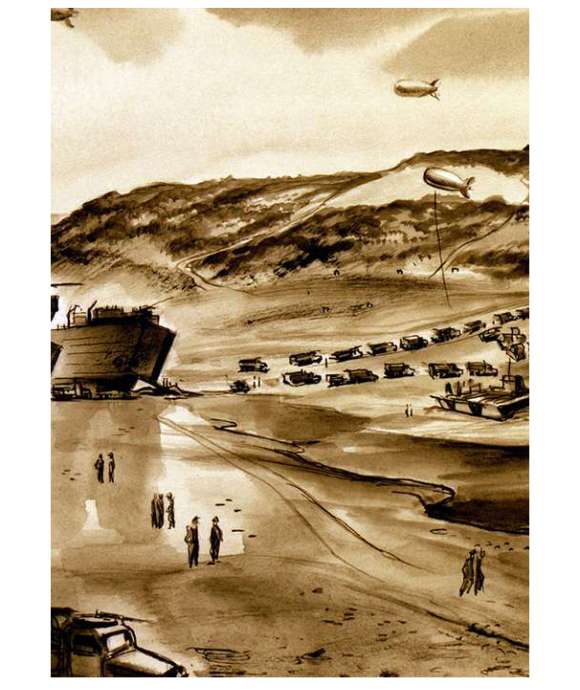
Coleman Warner
Cite this article:
MLA Citation:
APA Citation:
Chicago Style Citation:

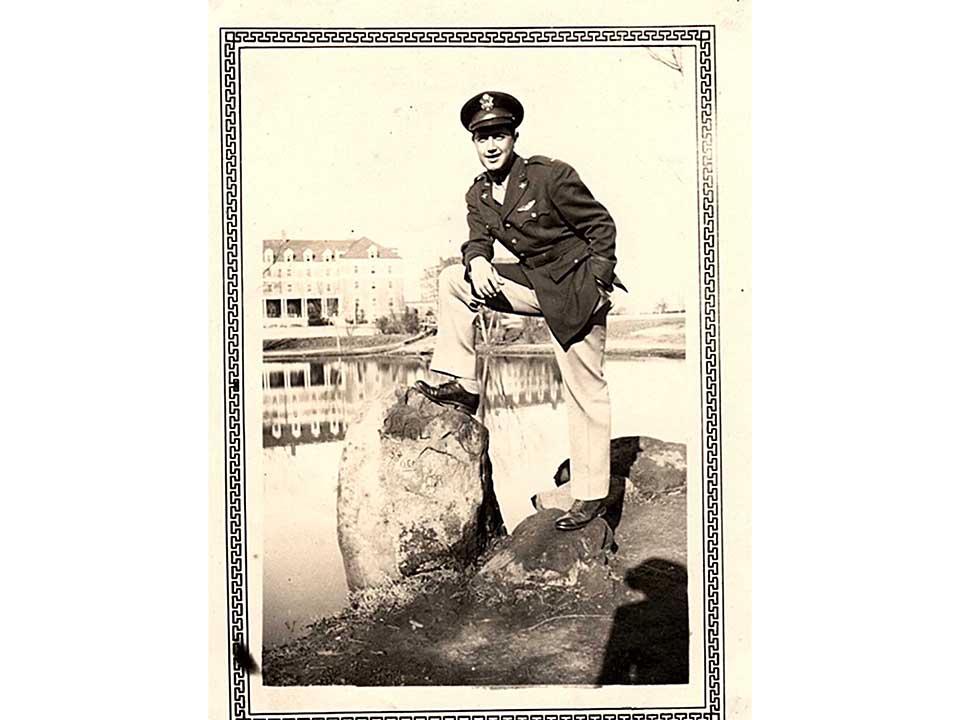
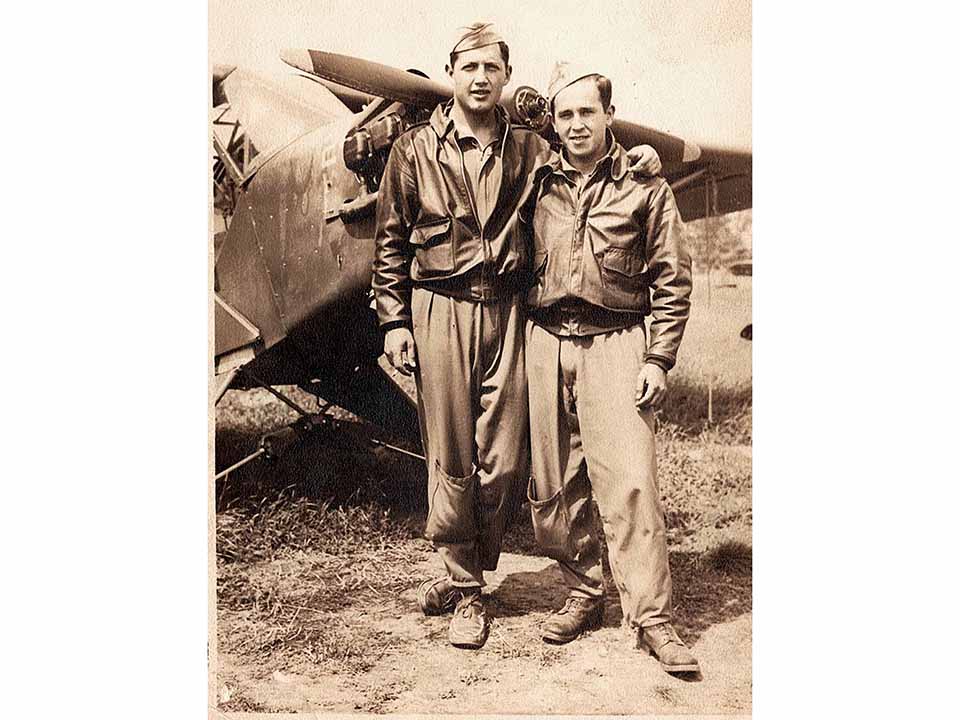
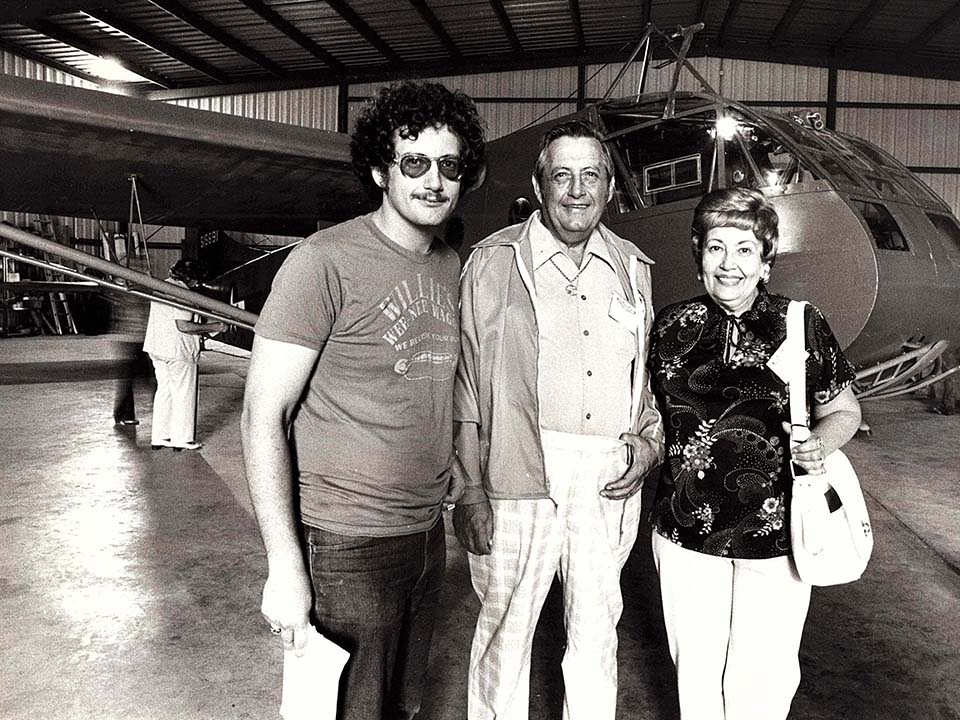
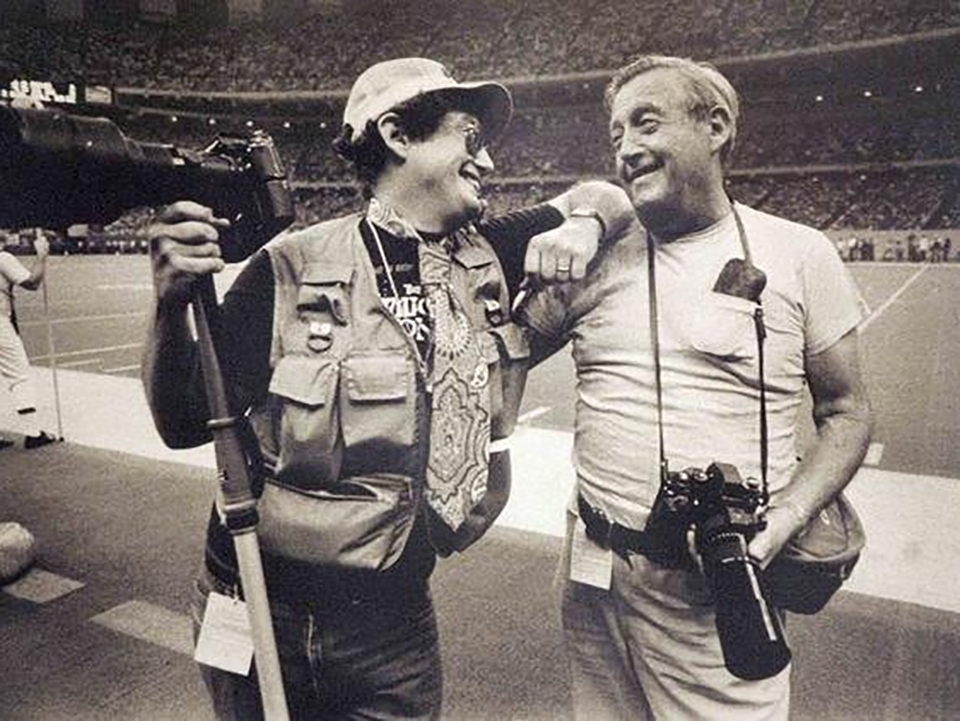
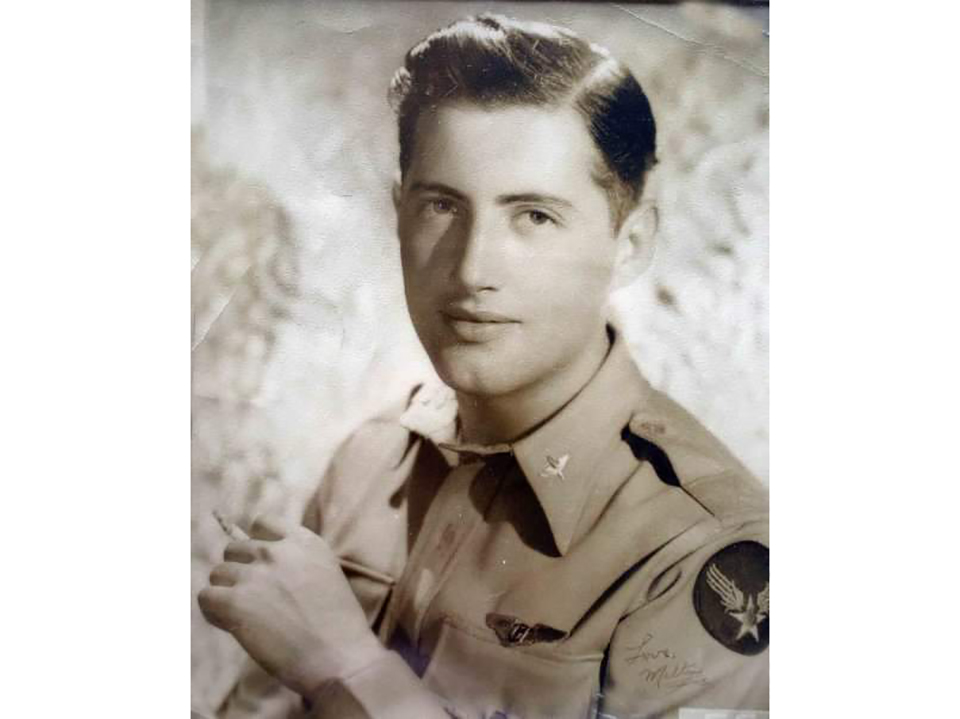

![Max Fuchs, New York City cantor, sings as Rabbi Sydney [sic] Lefkowitz, Richmond, VA, conducts the first Jewish services from Germany.](/sites/default/files/styles/max_650x650/public/2025-10/image1.jpg)






